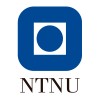
Intermittent Theta Burst Stimulation After Acute Stroke
Ischemic Stroke,This pilot sham-controlled study aims to determine the safety and efficacy of repetitive transcranial magnetic stimulation given as a facilitatory intermittent theta burst stimulation (iTBS1200, 1200 stimuli/session) paradigm to enhance motor recovery in subacute stroke patients.

The Pilot Clinical Study of PG2 Injection on Hemorrhagic Stroke
Hemorrhagic StrokeAstragalus membranaceus (AM) is used to treat stroke for a long time, and a number of studies have shown that AM can reduce cerebral infarction area and has anti-oxidation activity. PG2, a sterile powder of polysaccharides isolated from the root of astragulus (Huang-Chi) for intravenous injection, has been approved as a botanical drug by TFDA. Hemorrhagic stroke will induce secondary peri-blood clot edema and that may increase intracranial pressure to exacerbate clinical symptom. Therefore, the purpose of the present study was to investigate the efficacy of PG2 on hemorrhagic stroke.

Clinical Study to Investigate the Safety and Efficacy of MLC601 in 150 Iranian Patients After Stroke...
StrokeTo investigate the safety and efficacy of MLC601 (NeuroAideTM) as a Traditional Chinese Medicine on motor recovery after ischemic stroke.

The Effects of a Rhythm and Music-based Therapy Program and Therapeutic Riding in Late Recovery...
StrokeThe initiative to the study is based on the fact that various forms of enriched environments and multimodal stimulation are found to have positive influences on motivation and psychosocial well-being and have been shown to facilitate multiple processes in the brain leading to structural regeneration and functional recovery. Since there is a lack of rehabilitation programs that encompass all dimensions of a stroke survivor's life researchers agree upon the need for a rehabilitation program that addresses both the social and physical needs of the patients. The aim with the project is to investigate whether it is possible to improve the life situation among patients with a history of stroke through a rhythm and music method and therapeutic riding. To get insights in the underlying mechanisms our research also focuses on relevant physiological, neurobiological and psychosocial mechanisms induced by the interventions. The hypothesis is that both treatment methods will mainly enhance participants' degree of participation. The study is a randomized controlled trial where about 123 participants (50-75 years old) who had their stroke incident 1 - 5 years ago will be consecutively included and randomly allocated to the following three groups: a) Ronnie Gardiner Rhythm Music Method (RGRM) b) therapeutic riding c) a control group receiving RGRM after 9 months. Treatment proceeds during 12 weeks and evaluation takes place pre- and post intervention, and 12 and 24 weeks after the treatment is finalized. The evaluation consists of a thorough neuropsychological assessment, a physiotherapeutic assessment, sampling of blood and questionnaires covering mental, psychosocial, physical and psychological well-being. Interviews are also conducted in order to map the participants' experiences from the two treatment programs. Specially designed interviews are also planned to be carried through with participants having aphasia. So far, there is only empirical support suggesting that RGRM has positive effects for individuals with a history of stroke making it significant to carry out research with the aim to contribute to strengthening the evidence of the method. A positive outcome would increase the scientific basis for this alternative treatment thus facilitating further research and implementation in everyday clinical practice.

Robotic Assisted Upper-Limb Neurorehabilitation in Stroke Patients
StrokeThis study will compare robotic training with usual care and intensive comparison therapy to attempt to improve upper extremity function.

A Study on the Use of Tanakan® for Recovery of Neurological Impairment Following Ischaemic Stroke...
StrokeAcute1 moreThe purpose of this study is to evaluate the effectiveness of Tanakan® 240mg in association with Acetylsalicylic acid (325mg/day) in the recovery of neurological impairment following ischemic stroke.

Pilot Study - Comparison of Upper Body Ergometer Vs. Robot in Upper Extremity Motor Recovery Post-Stroke...
StrokeWe will test whether robot driven, goal directed, trajectory corrected exercise enhances motor outcome in the upper limb of stroke patients better than matched motor activity on an upper body ergometer (monark).

Continuous Positive Airway Pressure for the Treatment of Stroke
Acute Ischemic StrokeSleep ApneaNew stroke therapies are needed. This study seeks to provide the preliminary data needed to plan a future study that will evaluate the efficacy of using continuous positive airway pressure (CPAP) to treat stroke patients who have sleep apnea. Our goal is to use this therapy to reduce stroke symptom severity.

Mechanical Retrieval and Recanalization of Stroke Clots Using Embolectomy
StrokeThe purpose of this study is to compare the effectiveness of treating acute ischemic stroke with mechanical embolectomy using the Merci Retriever or the Penumbra System within 8 hours of symptom onset to standard medical treatment, and to identify people who might benefit from mechanical embolectomy by the appearance of stroke on multimodal computerized tomography (CT) or magnetic resonance (MR) imaging.

Strength Training for Chronic Stroke Patients
StrokeThe study aims to investigate the effects of strength training on maximal strength, walking ability and neural function in chronic stroke patients. The strength training intervention in this study is different to all previous interventions for stroke patients. Maximal Strength Training (MST) involves weights of up to 90% of the participants 1 repetition maximum and has a focus on the explosive development of force. This study will use these principles for unilateral leg press and plantarflexion exercises. Only 2 previous studies have investigated high intensity strength training for stroke patients and they used intensities of 80% 1RM. Previous MST interventions have shown large increases in strength, rate of force development and this has transferred to improved walking economy. The investigators predict that MST will give large increases in strength, improved rate of force development (RFD) and walking economy. The investigators expect that better neural function will account for the improvements. This study could provide evidence for the adoption of a completely different method of strength rehabilitation for stroke survivors.
